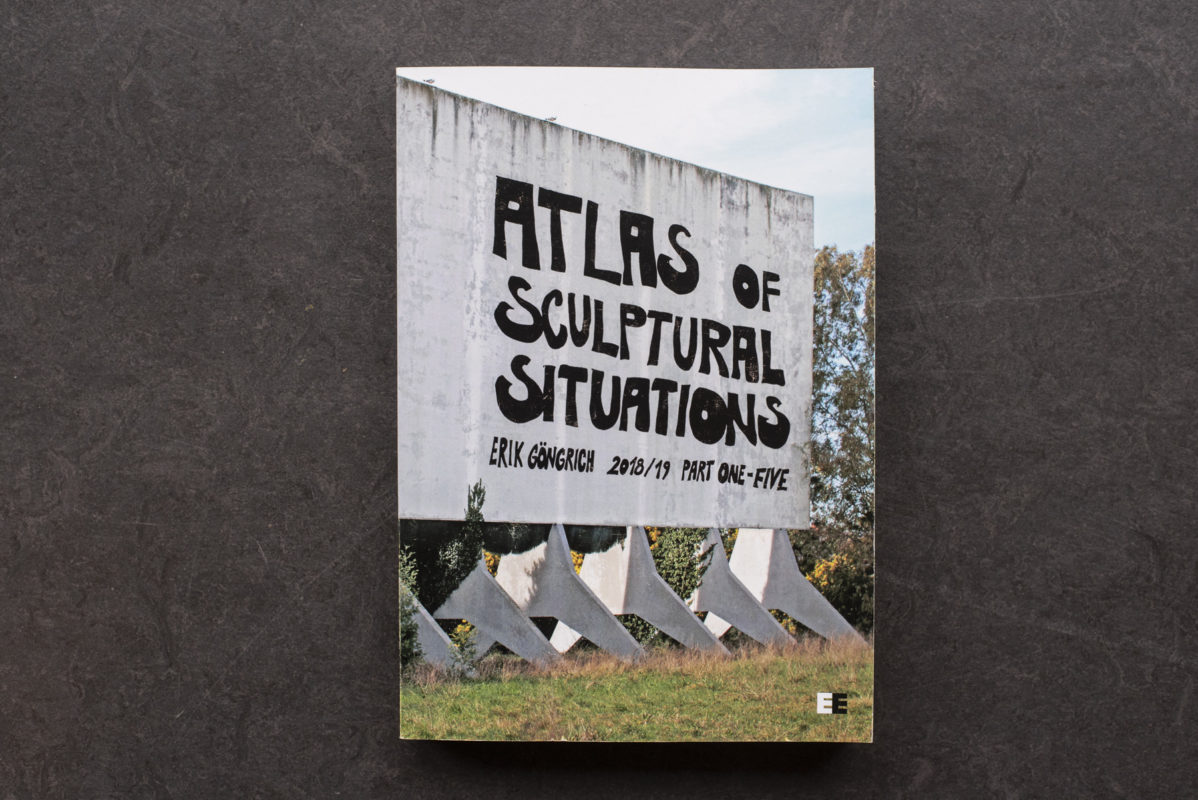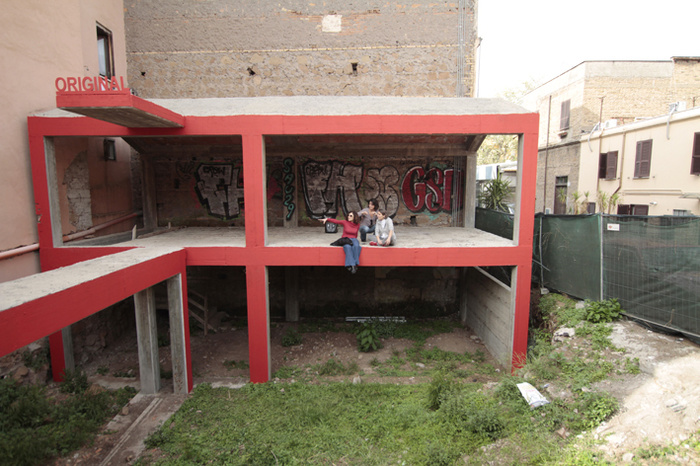Erik Göngrich, artist
Warburgs AUTO CINEMA, project proposal
During his residency in the German Academy Villa Massimo, Erik Göngrich wandered around the city taking picures and drawings now collected in the publication Atlas of Sculptural Situations, published by eeclectic, and worked on the Pigneto area, where urban planning coexist and sometimes blends in with spontaneous architecture, seamlessly from the 50s on, focussing on a small two-storeys concrete structure in via del Pigneto. The house frame is for sure an original object, emerging as if it were an authentic work of art, a sculpture that reminds us of a shelter, with a v-shaped roof, a floor and also an unpredictable bridge, connecting the main structure to the square’s pavement. Adding the word ORIGINALon the top of the building, Erik explicited its nature of a little sculptural concrete house, an ORIGINAL Building.
Project proposal
First: Using the big concrete Screen of an empty Car-cinema in Rome for a projection of Aby-like images of today. Second: Making a Aby library in the ORIGINAL Building.
On which fields of knowledge are you focused?
Art in public, architecture, city, photo, drawing, sculpture,….
What is the object of your research?
At the moment how to make collaborations to work in diverse production groups over the big questions of climate, dysfunctional urbanism and food.
Could you identify some constants in your work?
Working with given situations and their users, developing art out of real situations.
How did you find out about Aby Warburg’s work?
In Florence. Wild image combination over time and content.
How would you define an Atlas?
A place of exchange and discussions.
Atlas as a conceptual, formal and mnemonic device; do you use it in your work?
Finding conclusions is based on the analog putting together of images.
Do you know about the existence of Mnemotechnics?
Yes.
Which mnemonic system guides the organization of your material?
Subjective imagination.
Are there visual and emotional formulas (pathosformeln) in your project?
Probably yes.
In your work, do you identify formal or conceptual recurrences such as repetitions and disruption, distance and proximity, identity and migration, conflict and colonization?
Wow this is far too much for me to answer in this little line here.
In your work, what is the balance between image and text?
78% Image/Space/Display – 22% Text/colour/surface.
Thinking about Warburg’s ‘good neighborhood rule’, what are the books that underpin your project?
Radikal Modern, Planen und bauen im Berlin der 60er Jahre – Berlinische Galerie 2015
WAX – Die Farben Afrikas von Anne-Marie Bouttiaux – Gerstenberg Verlag 2019
Lütten Klein from Steffen Mau – Suhrkamp 2019,
Street Art in Berlin – Kunst im öffentlichen Raum von Bernhard van Treck, Schwarzkopf Verlag 1999
Incompiuto – The Birth of a Style – Alterazioni Video – Humboldt Books 2018
Are there more topic of interest that we haven’t pinned down?
Performative aspect in the sense of using and influencing (photographic) space by movingthrough, connecting any an ducky fuller to transform the 2dimensional atlas into a 3dimensional Dome – analogue (not digital) – for that probably there is another ruin of a sports stadium in the south of Rome the place to act?
Add a short bio.
hmm, its about the non functioning public space, the niches, the art in public, cooking, walking tours, found art, discursive drawings and photographic performances…

